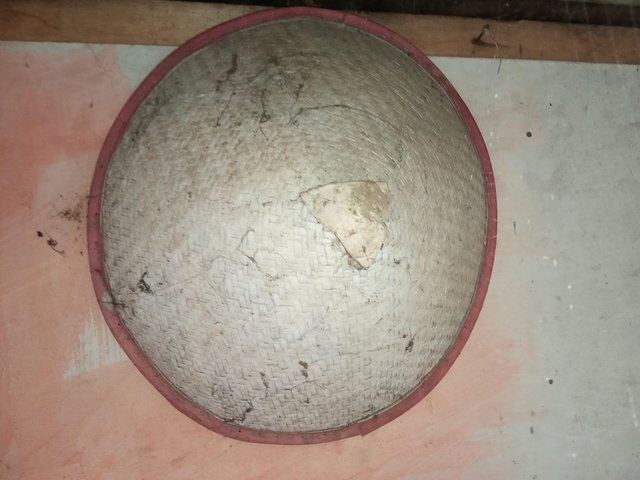The Characterized Culture Hat of The Caping

Caping is a type of cone-shaped hat that is generally made of woven bamboo.
--
Caping is also made of pandan leaves, or a kind of grass, or coconut leaves. A caping is generally equipped with a chin strap that serves to maintain the balance of the caping.

In addition to its distinctive shape, caping also has advantages over a hat, which can withstand the scorching heat of the sun during hot weather (head and neck) and can dispel rainwater when it is rainy.
Caping is usually used by farmers when working in the fields, although there are also groups of non-farmers who use it, and some even use it as a lantern / cup lamp.
Caping has become a part of Javanese culture, caping is made into the name of a Javanese song titled Caping gunung.
--
Caping was not only used in Indonesia but also used in Southeast Asia and East Asia, especially in China, Korea, Vietnam, Japan and so on.
Caping is very familiar to farmers and other rice workers. Caping is a head protection device used when working in the fields and fields. Its purpose is to protect the head from the heat of the sun and when it rains. So that caping is needed by those who work daily under the scorching heat and rain. (https://id.wikipedia.org/wiki/Caping)

How to weave
- Don't be stiff
- Not easily bored / discouraged
- We should weave on a flat floor
- Bring the woven material that we have tied up neatly
- Keep the bond next to us to make it easier to get material
- Use a cushion that is not too high with the floor
- Complete with classic music / radio that accompanies us in weaving so as not to get sleepy / bored.
- This fan weaving is different from weaving booths, arrogant, handsome, or others. Because of the way behind so that both sides look neat and there is no end of the plait.
- For the first time weaving we prepare two pieces of bamboo slices that have one part of the meat, one hinisnya or better both use hinis so that the results look neat
- For the middle axis we need a long one
- The other axis is zig-zag in size so that later when we turn it around it's enough to be woven
- We make the angle by crossing it and folding it parallel to the part we made for the middle axis by adding woven material.
- How to weave this can not be separated by a count of one-three-one onwards, and to the side do not make the wrong number of woven two.
- Do it repeatedly until the results become triangles, and until we are about right to turn the weaving.
- Pay attention when we want to turn the webbing on, don't be mistaken, and don't forget the end of weaving, we end up with one, so that the results are neat, different from the ones we put with three, the results will look neat.
- Then it is time to turn our webbing upside down by folding the last end we wove, and asking it to return to the center to the end
- Do the next in the same way, until in the end it will be ready for further processing. (https://kerajinanindonesia.id/kerajinan-anyaman-caping-bambu-wonogiri/)
 Thank you
Thank you
This post was manually curated by @upmewhale, in combined efforts with the eSteem curation team to bring further support to our valued Steem community! Post curated, courtesy of @melinda010100